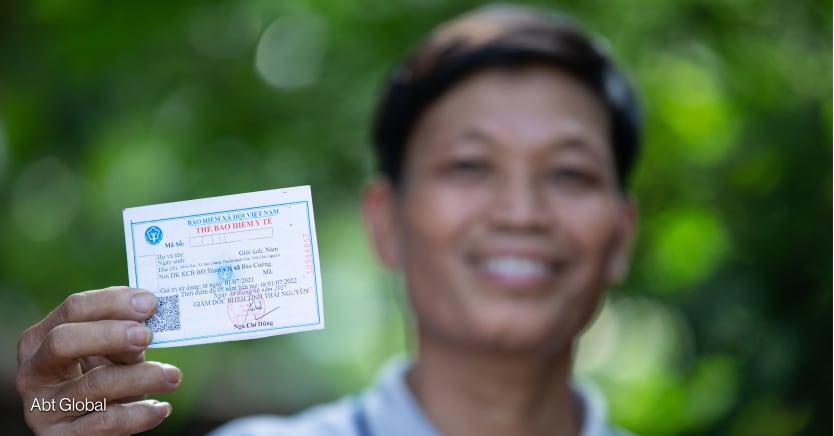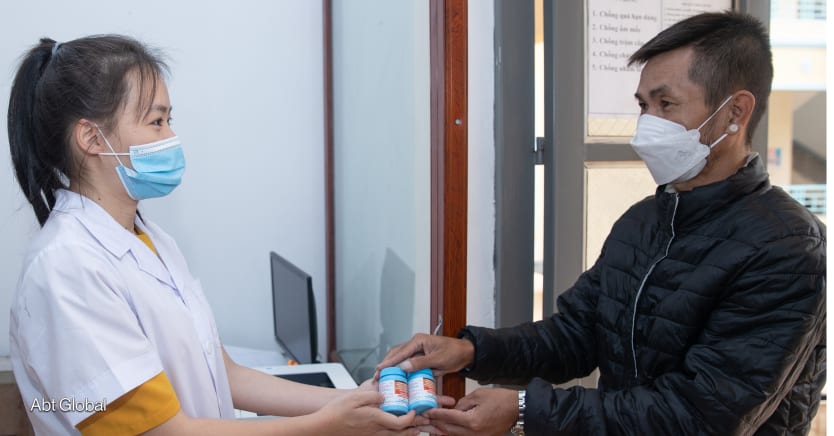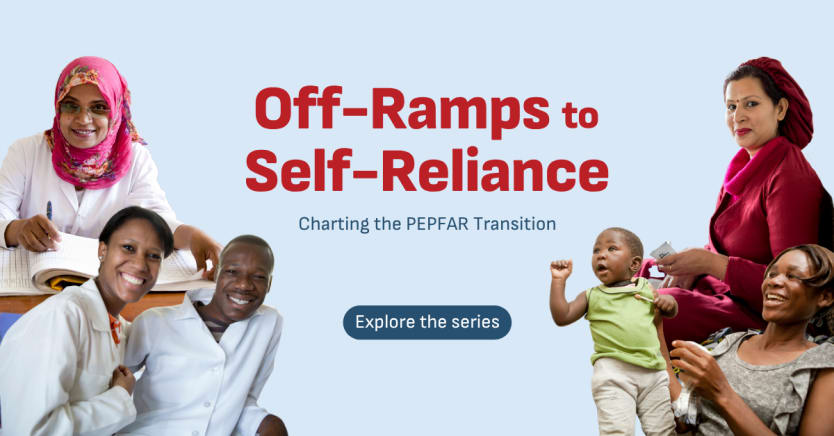
How can we shift HIV response from being donor-funded to country-led — without losing momentum? Vietnam is showing a path — from expanding social health insurance, or SHI, to forging pragmatic public-private partnerships and integrating HIV services into primary health care.
To make this transition happen, the President's Emergency Plan for AIDS Relief, or PEPFAR, and Abt Global, most recently through the Local Health System Sustainability, or LHSS, project, have partnered with Vietnam. Today, Vietnam’s national institutions are driving it.
SHI is the engine
By integrating HIV treatment into SHI, Vietnam has transformed its financing model, boosting domestic HIV investment from 34% in 2015 to nearly 55% by 2023. Trends stayed positive in 2024 as SHI coverage expanded and provincial budgets grew. Incorporating 15 antiretroviral drugs, or ARVs, into the scheme has been a game-changer: The share of antiretroviral therapy, or ART, patients receiving ARVs through SHI surged from 32% in late 2019 to 94% by late 2023, as shown in the Ministry of Health’s sustainability road map.
Coupled with regulatory reforms enabling open bidding, these moves have driven down costs and ensured uninterrupted treatment for over 163,000 people living with HIV. This has been one of Vietnam's great successes in ensuring sustainable financing for HIV/AIDS prevention and control. In the 2024–2025 cycle, the government successfully procured nine of 11 ARV drug items through competitive bidding, a clear signal of fiscal ownership.
Two late 2024 policy decisions solidified this fiscal shift. Circular 46 established economic-technical norms for HIV prevention services, giving provinces a legal framework to price services and plan budgets. Circular 30 defined 39 primary health care packages, explicitly including HIV services at commune health stations, turning integration from aspiration to reality. These reforms position HIV care as a core component of Vietnam’s health system, not a donor-dependent program.
It’s not all rosy, though: Procurement delays, complex drug management, and slow payment processes jeopardize ARV supply. The ministry’s sustainability road map indicates that nearly 10% of people living with HIV remain uninsured, often due to stigma or lack of identification documents. For those enrolled, co-payment systems are mired in bureaucracy, delaying reimbursements and complicating care.
To get ahead of such obstacles, Vietnam Social Security, the agency managing SHI, is modernizing its systems. With Abt Global’s support, the agency integrated an AI-powered optical character recognition tool to automate SHI claim processing. An upgraded Electronic Logistics Management Information System now tracks 31 supply-chain indicators and links HIV ARV data to procurement and use. Real-time dashboards give managers actionable insights, and governance protocols have been formalized in line with MOH Circular 05 on HIV reporting requirements. These will all make domestic financing faster and more accountable.
Nongovernment players fill gaps
Vietnam’s playbook endorses community and private sector engagement not as an add-on but as a budgeted set of services. One promising vehicle — and more cost-effective option — is provincially financed social contracting, where authorities directly purchase HIV services from social organizations.
A pioneering nine-province social contracting pilot between 2022 and 2024 has already empowered community-based organizations, or CBOs, to deliver services such as testing and linkages to ART and pre-exposure prophylaxis, or PrEP. Buying defined outputs from non-state partners complements SHI-financed clinical care and protects access for key populations who may avoid public facilities due to stigma or cost.

Still, there are signs of uncertainty ahead. CBOs have been largely funded by international donors. As external funding declines and without sustainable financing, CBOs and private providers could retreat from the HIV response, leaving critical gaps in prevention and care and undermining hard-won gains.
Legal frameworks need updating to enable CBOs and private providers to deliver HIV services under defined conditions, with transparent pricing and financial mechanisms. Meanwhile, CBOs themselves must strengthen capacity to meet service standards and compliance requirements.
HIV within primary health care
Integration is more than policy. It is an operational challenge involving resources, people, and systems. Circular 30’s 39 primary health care packages move essential tasks to commune health stations while maintaining referral pathways for more complex care. The trick is to preserve the speed and precision of vertical HIV delivery while strengthening primary health care platforms for continuity. That means standardizing HIV tasks at the primary health care level, simplifying procurement, and protecting line items in provincial budgets.
The Vietnamese government is laying the legal and financial groundwork to make this possible. The Ministry of Health is revising the Law on Disease Prevention and expanding the list of public health services funded by the state to include HIV prevention. The new economic-technical norms and pricing frameworks will allow provinces to plan and budget for HIV services within primary health care, turning policy into practice.
What happens next
Vietnam has done the heavy lifting of legislating, budgeting, and reorganizing to build a domestically financed and implemented HIV response. PEPFAR’s support accelerated this transition, helping the Vietnam Administration of Disease Prevention, the Ministry of Health, and Vietnam Social Security integrate facilities into SHI, standardize procurement and pricing, and deploy data systems that make public money perform.
To build on the momentum, Vietnam must keep increasing domestic funding resources for HIV/AIDS, especially through SHI and provincial budgets, while expanding and funding social contracting nationwide.
The critical balancing act ahead: embed HIV services within primary health care packages and decentralize prevention and control services — without losing the speed of vertical programs. In January 2025, with the support of the LHSS project, Vietnam charted its HIV sustainability road map, outlining strategic priorities to end AIDS by 2030. Now, those plans must move from paper to practice.
Vietnam’s journey is far from over, but its trajectory offers a powerful lesson: Sustainability is a strategy. With the right mix of political will, technical expertise, and innovation, even the most donor-dependent programs can stand on their own.
Figures cited in this article are drawn from unpublished annual and quarterly project reports.
This content is sponsored by Abt Global as part of Off-Ramps to Self-Reliance, a series exploring insights on the future of HIV programming and the multisectoral solutions that support countries’ off-ramps, resilient health systems, and sustained HIV progress. Click here to learn more.









